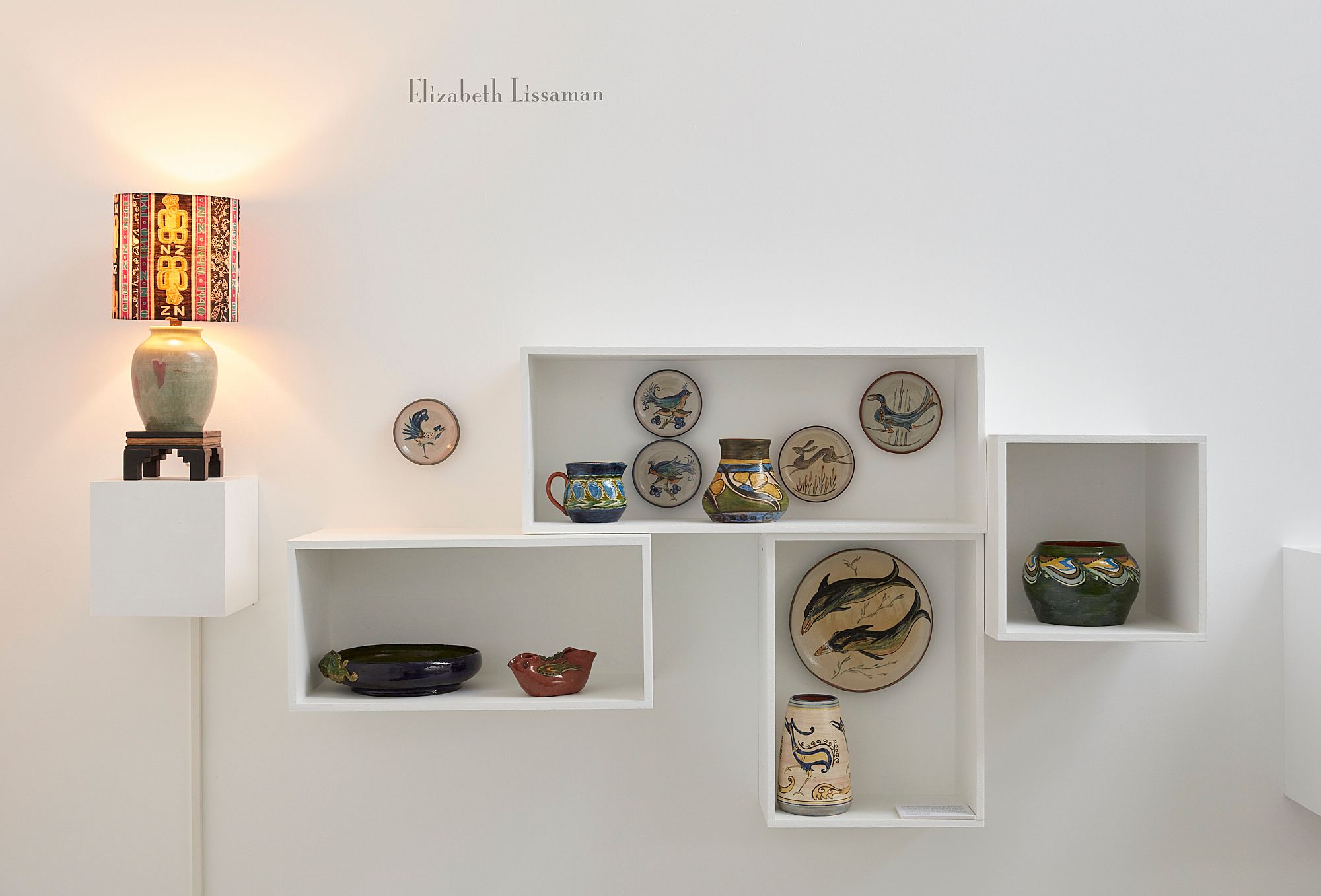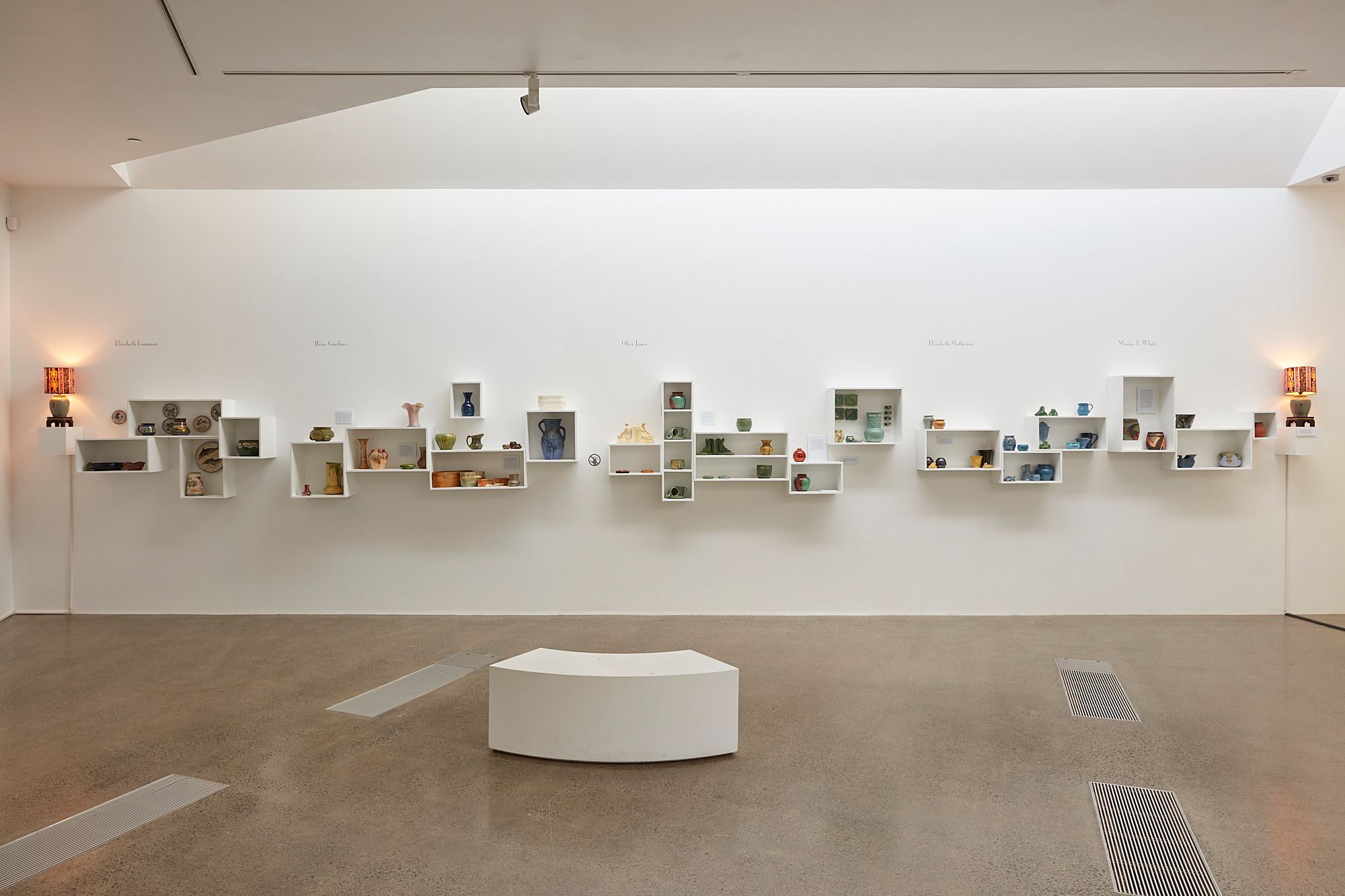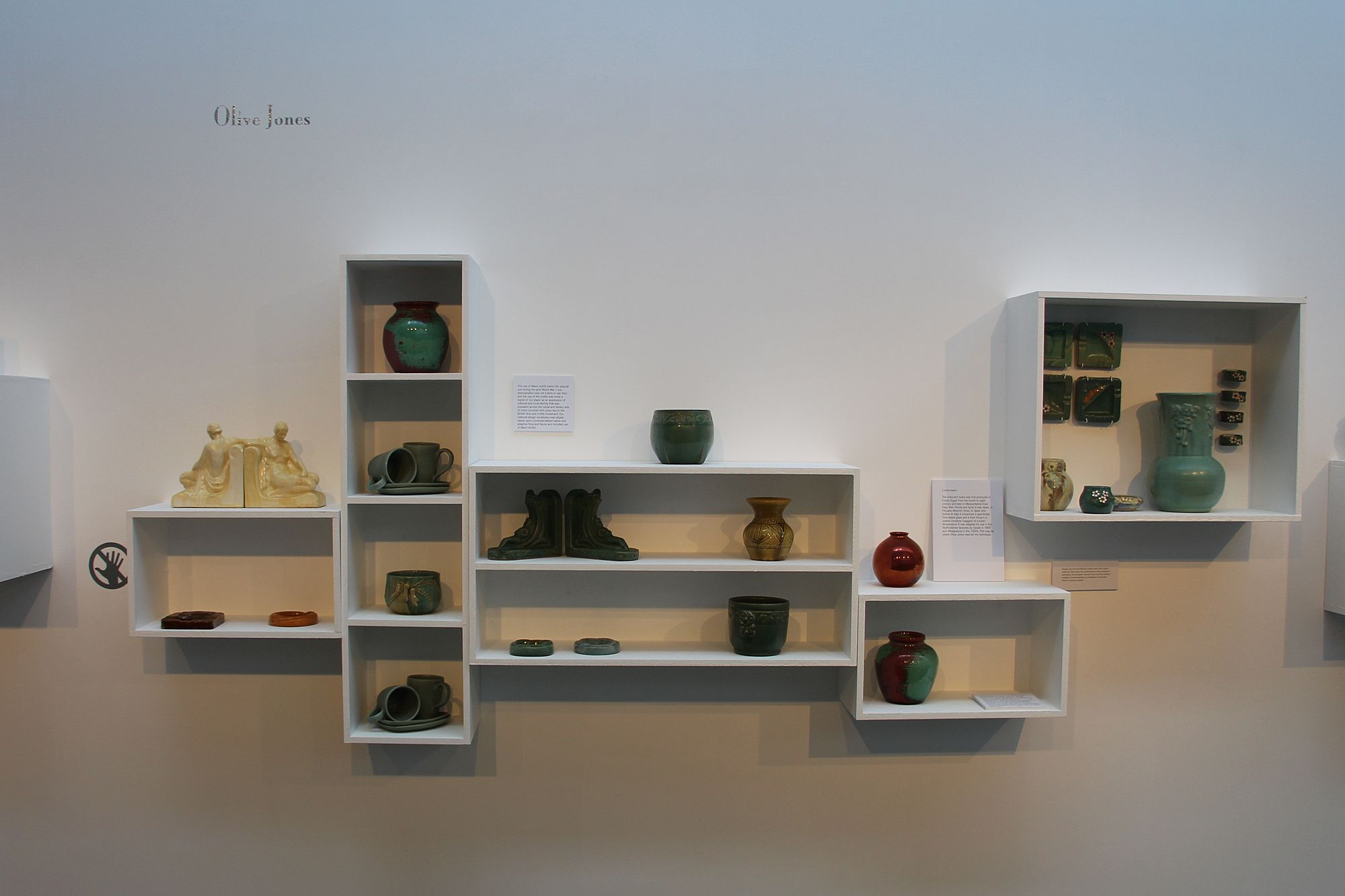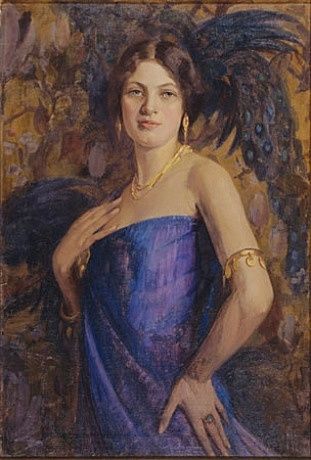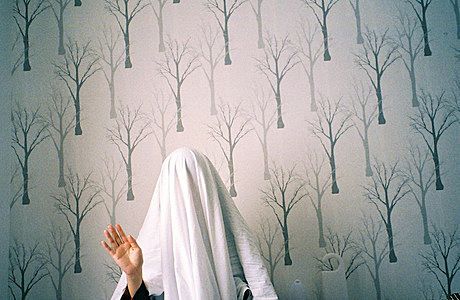About Time: A Review of Leading Ladies
Why has it taken so long to exhibit these women?
Why has it taken so long to exhibit these women?
I can date life-changing events from my early encounters with pottery. In the early 1970s, my best friend’s older sister at art school in ultra-conservative Dublin became pregnant to a fellow student, refused to hide the fact from suburbia, went through with the birth and subsequently married the father and moved to England where they made a life making pottery. This was such a brave way to opt out. Another pottery moment occurred during my final year at school in Christchurch in 1975 when, smitten by an older boy at a candlelit party leaning against a fireplace gazing into my eyes quoting poetry, I just knew he needed a pair of pottery goblets for his twenty-first birthday. I ventured into The Capricorn, a small craft shop in Gloucester Street, to be greeted by an alarming array of goblets. After much time handling, comparing and fretting to locate a matching pair, the woman in the shop kindly explained that, being handmade, each goblet was meant to be that bit different, so why not select a pair I thought simply looked good together? In that instant I began to understand the beauty of the handmade pot. The boy faded into the background, but the advice that perfection was far less important than artistic expression has long since resonated.
…smitten by an older boy at a candlelit party leaning against a fireplace gazing into my eyes quoting poetry, I just knew he needed a pair of pottery goblets for his twenty first birthday.
Some of those who grew up after the second World War between the 1940s and 1980s became smitten by the pottery bug and went on to become potters, but for most the experience remained at a distance limited to purchasing and using pottery in our daily lives. Going on to study art history at the University of Canterbury, I immersed myself in the rarefied world of fine arts seen through painting, architecture and sculpture. The achievements of magnificent Italian, Persian, French, British and American architectural wonders were demonstrated through colour slides with interior shots illustrating innovations in paintings, arches, ceilings and in carved tombs of great men. Any tiles, textiles or furniture glimpsed in these interiors were deemed decorative arts and unworthy of our academic attention. My love of decorative objects was not requited at the University of Canterbury.
Thank goodness for postmodernism, which burst into our consciousness from the mid-1980s. Along with esoteric theories drawn from philosophy and explained with linguistic gymnastics, the narrow canon of art history – one where only the work of male fine artists was important – was questioned. The politics of gender, race and mass media began to knock down the artificial doors between art galleries and museums, between craft and art. All sorts of visual delights were opened up for rediscovery, review and enjoyment. The art of minorities in Aotearoa, particularly women, Māori and Pasifika and such things as pottery, textiles and interiors, began to fill in the gaps.
Along with esoteric theories drawn from philosophy and explained with linguistic gymnastics, the narrow canon of art history – one where only the work of male fine artists was important – was questioned.
As the work of female decorative artists began to emerge, recognition in the forms of exhibitions and publishing appeared. James Mack aka Galvan Macnamara programmed interdisciplinary exhibitions at the Dowse. The search for style - decorative art design 1870-1930 in 1983 and The innocent eye: folk art at the Dowse Art Museum in 1988 revealed treasures such as decorator Jane Brenkley. In 1991, potter Rick Rudd organised an exhibition of the work of early potter Elizabeth Lissaman at the Bathhouse, Rotorua’s pubic art gallery and museum. Leading up to a century of women’s suffrage, Dictionary of New Zealand Biography entries appeared on women potters Lissaman and Briar Gardner, and in Sandra Coney’s 1993 book Standing in the Sunshine: a History of New Zealand Women Since They Won the Vote a section was devoted to them along with and another potter Olive Jones. This overdue scholarly attention helped bring the work of these women and others to wider prominence as did the later work of writers including Douglas Lloyd Jenkins, Ann Calhoun, Damian Skinner, Moyra Elliott and Lucy Hammond.
Yet despite these efforts, it has taken a surprising long time for us to be able to see the work of our early women studio potters together. In commissioning ceramics, historian, curator and editor Moyra Elliott at Te Uru has done a timely service in bringing into focus their collective work in the exhibition Leading Ladies. Four of the five women studio potters represented – Elizabeth Lissaman, Briar Gardner, Elizabeth Matheson and Olive Jones – are now familiar names. Each was acknowledged and honoured during their lifetime by the pottery community and all have their work represented in public collections with pieces regularly appearing on the marketplace. The fifth potter, Minnie White, is better known as a painter and a fine selection of her pots has been flushed out for display.
Previously, these women have been seen as mere precursors to post-second world war modernist Anglo Oriental pottery, rather than innovators of their own accord.
Despite the great efforts of Te Uru bringing this exhibition to life, one question remains: why has it taken this long to show these leading ladies as such? Previously, these women have been seen as mere precursors to post-second world war modernist Anglo-Oriental pottery, rather than innovators of their own accord. In addition, we continue to struggle to appreciate art created before such recent memory, other than the first seminal The Group exhibition in Christchurch in 1927 which arguably launched our country’s modernist art period. But one certain reason that these women have never been celebrated appropriately is that, judging by this exhibition, some of the best pieces of early studio pottery remain in private hands.
The more than 90 pieces borrowed from private collections have been judiciously selected for their exhibition quality. They are grouped by potter, elegantly displayed in and on boxed shelving (which does make it somewhat difficult to view all of them in the round). The groupings distinguish each potter’s styles, motifs, range of techniques, mainly hand-thrown but some cast, and reveal some beautiful decoration and glazes. There is no attempt to date the pieces, but they appear to be largely early styles, sharing the characteristically colourful stylised linear decoration, fluted edges and moulded geometric forms of the 1920s to 1940s. Minnie White’s streamlined angular pots decorated with gold and silver are singled out as representing Art Deco, while the exhibition presents the women potters as followers of the nineteenth century Arts and Crafts philosophy creating meaningful handmade objects for the betterment of the wider community. The predominance of simplified modern forms, colours and stylised decoration in their work and these women’s stories, however, suggests that all could be more accurately portrayed within the forward looking Art Deco period which arrived in New Zealand soon after the First World War and continued in the space between it and the next war.
The careers of each illustrate the wider opportunities that become available to ambitious New Zealand women in the creative industries to become studio potters, artists, models, dancers, dress designers, singers and embroiderers. They began working as studio potters during the 1920s and 1930s; Lissaman and Gardner during the 1920s in Marlborough and Auckland respectively, Matheson in Hawkes Bay and Jones in Auckland in the 1930s. Most travelled overseas in order to study before setting up studios and pursuing productive careers in which they took responsibility for their own creations, from the designs to making, to firing and selling their own pots. As the text panels in Leading Ladies state, “it was necessary to be a woman of singular purpose and determination if making pottery was the aim, whether for economic independence, contributing towards family income or artistic expression. Early women … needed exceptional personal resolve (and funds).”
It indeed required more than purpose and determination for modern women to persevere with a creative life during the often precarious Art Deco period in New Zealand. Elliot points out that research into our early studio potters is a work in progress, and in the final panel of the exhibition There were More… elaborates on the studio potter, Mrs Edwards, who is represented only by a photograph of her at the pottery wheel demonstrating during the international 1925-26 New Zealand and South Seas Exhibition in Dunedin with an array of proficiently made pots alongside. Briar Gardner also exhibited at this Dunedin exhibition, not as a potter, rather as an Art Embroiderer having returned from studying the craft in Melbourne in 1924. In her unpublished autobiography, Gardner pondered her next move and was establishing a home studio pottery just as the Depression loomed and held her first exhibition in 1928.
It indeed required more than purpose and determination for modern women to persevere with a creative life during the often precarious Art Deco period in New Zealand.
Like the potters, artists including Rita Angus and Wellington portrait painter, Mary Elizabeth Tripe, also ran studios from her home. Tripe’s portraits of modern fashionable young women clothed in exotically patterned and textured garments were quintessentially 1920s Art Deco. A favourite model was the young seamstress from London, Mae Sherman, who in 1926 - aged 24 - travelled alone to New Zealand to find work, lured by cheap tourist class travel by liner. Sherman settled in Wellington and within two years rose to become a dress designer which enabled her to earn enough to afford to rent her own flat and live a flamboyant life involved in theatre and modelling. She appeared in several of Tripe’s portraits, posed in a mannered fashion, draped in sumptuous richly coloured and patterned silks and rayon which conveyed the idealised sophistication and glamour of the period.
But as unemployment grew and the stockmarket crashed in 1929, the worldwide Depression started to bite. Elizabeth Lissaman was able to hunker down in Marlborough and helped support her family through sales of her pots. The timing of Briar Gardner’s career change might have been unfortunate, had not a main job as housekeeper in her family pottery enabled her to continue to work through the hard times. The likes of Mae Sherman found it hard to secure work when dress manufacturers in Wellington seeking workers advised ‘No high-price artist need apply’ and by early 1929 she had given up her flat, returned third-class to England, and died tragically young. Ironically, Virginia Woolf's essay A Room of One’s Own - published in the same year Sherman left New Zealand - urged women who wanted to live creative lives to generate a legacy that would provide 500 pounds a year.
After the Depression, from the mid-1930s, as the exhibition notes “the early pioneers were no longer working in isolation”. Although it became somewhat easier to establish a creative career in New Zealand, to sustain one and avoid the fleeting nature of success for those like Mae Sherman required crucial financial backing. Angus, Tripe and these potters Lissaman, Gardner, Jones and Matheson were all able to afford to maintain their own studios for decades-long careers through a combination of sales of their work and the financial support of their families. Minnie White’s story as a potter still has gaps but we know she was able to fall back on art teaching and share a group studio in Auckland.
This exhibition runs until 28th January 2018 and offers an opportunity for the pottery and art loving public to see the work of our early women studio potters displayed together. Collecting pottery is a hot hobby these days and Leading Ladies sets a high standard for collectors and, even for those of us familiar with the territory, the achievement of the exhibition in finally bringing these studio potters together is a much needed revelation.
Briar Gardner, Elizabeth Matheson, Minnie F. White, Olive Jones and Elizabeth Lissaman. Curated by Moyra Elliott.
Leading Ladies
Te Uru Waitakere Contemporary Gallery
7 October 2017 to 28 January 2018
All images courtesy of the artist and Te Uru Waitakere Contemporary Gallery .
This piece is presented as part of a partnership with Blumhardt Foundation. They cover the costs of paying our writers while we retain all editorial control.
